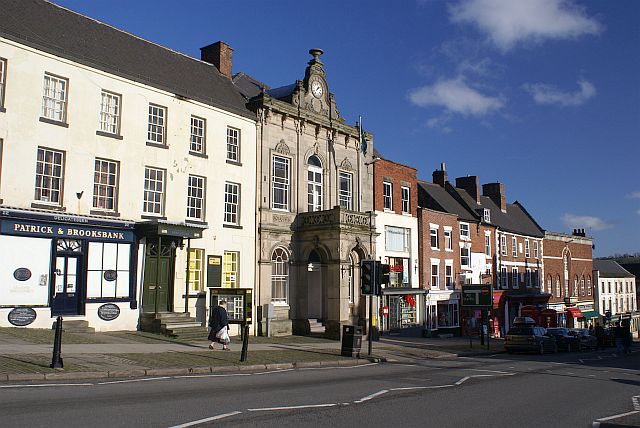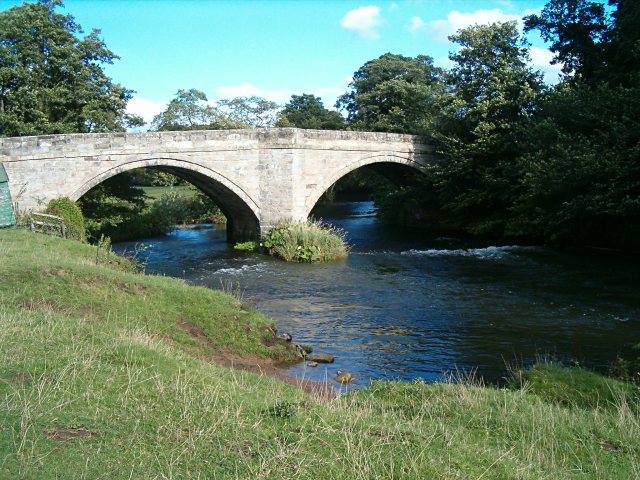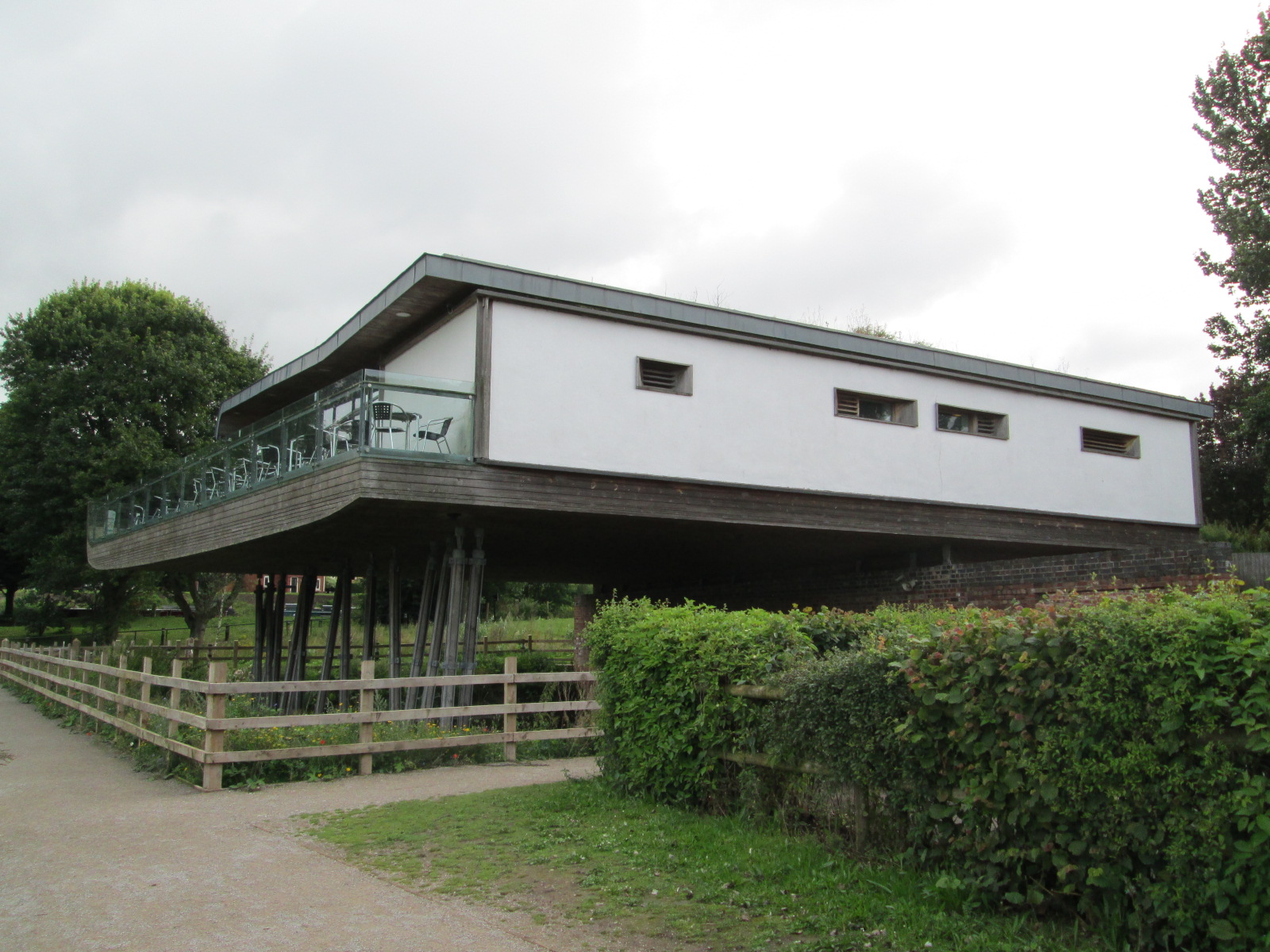|
Stanton, Staffordshire
Stanton is a small village situated at the eastern end of the Weaver Hills, Staffordshire, England. Stanton is located north-west of London and east of Stoke-on-Trent. It has a population of 232 according to the 2001 Census. The landscape around the village is mainly pastureland bounded by dry stone walls. History Evidence of early human activity can be found at Stanton with three Bronze Age barrows on the hilltop of Thorswood. In 1953 a gold bracelet was found in the parish dated circa 800 BC, now housed in the Potteries Museum and Art Gallery, Stoke on Trent. Stanton is listed in the Domesday Book as Stantone, the name means "Stone Farmstead" which could refer to its building material, some prominent stone or its site on stony ground. The stone itself is an excellent building material, mainly sandstone, being used to build the majority of farmhouses and cottages in the village. In 1870–72, John Marius Wilson described Stanton in his ''Imperial Gazetteer of England an ... [...More Info...] [...Related Items...] OR: [Wikipedia] [Google] [Baidu] |
Ashbourne, Derbyshire
Ashbourne is a market town in the Derbyshire Dales district in Derbyshire, England. Its population was measured at 8,377 in the 2011 census and was estimated to have grown to 9,163 by 2019. It has many historical buildings and independent shops. The town offers a historic annual Shrovetide football match. Its position near the southern edge of the Peak District makes it the closest town to Dovedale, to which Ashbourne is sometimes referred to as the gateway. The town is west of Derby, south-east of Buxton, east of Stoke-on-Trent, south-south-east of Manchester, south-west of Sheffield and north of Lichfield. Nearby towns include Matlock, Uttoxeter, Leek, Cheadle and Bakewell. History The town's name derives from the Old English ''æsc-burna'' meaning "stream with ash trees". Ashbourne was granted a market charter in 1257. In medieval times it was a frequent rest stop for pilgrims walking "St Non's Way" to the shrine of Saint Fremund at Dunstable in Bedfordshire. T ... [...More Info...] [...Related Items...] OR: [Wikipedia] [Google] [Baidu] |
Ellastone
Ellastone is a rural village in the West Midlands of England on the Staffordshire side of the River Dove, between Uttoxeter and Ashbourne in north Staffordshire. Geography Ellastone lies on the River Dove and is a hive of fluvial activity. Two small brooks (Sandford Brook and Tit Brook) flow directly into the River Dove. Additionally there is a natural spring, still officially known as Bentley Well, which flows into the Tit and sits on former farmland which is now occupied by a new development, Bentley Fold. The Dove is the historic boundary between the two counties of Derbyshire and Staffordshire, and some of its crossings and bridges were once important elements of the main coaching road from London to the ports of the North-West. The modern village Today the village, on the busy B5032 road is marred by HGV and Alton Towers traffic. The village attracts lots of foot tourism, as it lies near the southern end of the Limestone Way, a long distance bridleway. Ellastone's c ... [...More Info...] [...Related Items...] OR: [Wikipedia] [Google] [Baidu] |
Counter Urbanization
Counterurbanization, or deurbanization, is a demographic and social process whereby people move from urban areas to rural areas. It is, like suburbanization, inversely related to urbanization. It first occurred as a reaction to inner-city deprivation. More recent research has documented the social and political drivers of counterurbanization and its impacts in developing countries such as China, which are currently undergoing the process of mass urbanization. It is one of the causes that can lead to shrinking cities. While counterurbanization manifests differently across the world, all forms revolve around the central idea of migration movement from a populated location to a less populated location. Clare J.A. Mitchell, an associate professor in the Department of Geography at the University of Waterloo, argues that in Europe, counterurbanization involves a type of migration leading to deconcentration of one area to another that is beyond suburbanization or metro decentralization. ... [...More Info...] [...Related Items...] OR: [Wikipedia] [Google] [Baidu] |
World War II
World War II or the Second World War, often abbreviated as WWII or WW2, was a world war that lasted from 1939 to 1945. It involved the vast majority of the world's countries—including all of the great powers—forming two opposing military alliances: the Allies and the Axis powers. World War II was a total war that directly involved more than 100 million personnel from more than 30 countries. The major participants in the war threw their entire economic, industrial, and scientific capabilities behind the war effort, blurring the distinction between civilian and military resources. Aircraft played a major role in the conflict, enabling the strategic bombing of population centres and deploying the only two nuclear weapons ever used in war. World War II was by far the deadliest conflict in human history; it resulted in 70 to 85 million fatalities, mostly among civilians. Tens of millions died due to genocides (including the Holocaust), starvation, ma ... [...More Info...] [...Related Items...] OR: [Wikipedia] [Google] [Baidu] |
Census
A census is the procedure of systematically acquiring, recording and calculating information about the members of a given population. This term is used mostly in connection with national population and housing censuses; other common censuses include censuses of agriculture, traditional culture, business, supplies, and traffic censuses. The United Nations (UN) defines the essential features of population and housing censuses as "individual enumeration, universality within a defined territory, simultaneity and defined periodicity", and recommends that population censuses be taken at least every ten years. UN recommendations also cover census topics to be collected, official definitions, classifications and other useful information to co-ordinate international practices. The UN's Food and Agriculture Organization (FAO), in turn, defines the census of agriculture as "a statistical operation for collecting, processing and disseminating data on the structure of agriculture, covering th ... [...More Info...] [...Related Items...] OR: [Wikipedia] [Google] [Baidu] |
Population Of Stanton Over Time
Population typically refers to the number of people in a single area, whether it be a city or town, region, country, continent, or the world. Governments typically quantify the size of the resident population within their jurisdiction using a census, a process of collecting, analysing, compiling, and publishing data regarding a population. Perspectives of various disciplines Social sciences In sociology and population geography, population refers to a group of human beings with some predefined criterion in common, such as location, race, ethnicity, nationality, or religion. Demography is a social science which entails the statistical study of populations. Ecology In ecology, a population is a group of organisms of the same species who inhabit the same particular geographical area and are capable of interbreeding. The area of a sexual population is the area where inter-breeding is possible between any pair within the area and more probable than cros ... [...More Info...] [...Related Items...] OR: [Wikipedia] [Google] [Baidu] |
Archbishop Of Canterbury
The archbishop of Canterbury is the senior bishop and a principal leader of the Church of England, the ceremonial head of the worldwide Anglican Communion and the diocesan bishop of the Diocese of Canterbury. The current archbishop is Justin Welby, who was enthroned at Canterbury Cathedral on 21 March 2013. Welby is the 105th in a line which goes back more than 1400 years to Augustine of Canterbury, the "Apostle to the English", sent from Rome in the year 597. Welby succeeded Rowan Williams. From the time of Augustine until the 16th century, the archbishops of Canterbury were in full communion with the See of Rome and usually received the pallium from the pope. During the English Reformation, the Church of England broke away from the authority of the pope. Thomas Cranmer became the first holder of the office following the English Reformation in 1533, while Reginald Pole was the last Roman Catholic in the position, serving from 1556 to 1558 during the Counter-Reformation. ... [...More Info...] [...Related Items...] OR: [Wikipedia] [Google] [Baidu] |
Gilbert Sheldon By Sir Peter Lely
Gilbert may refer to: People and fictional characters *Gilbert (given name), including a list of people and fictional characters *Gilbert (surname), including a list of people Places Australia * Gilbert River (Queensland) * Gilbert River (South Australia) Kiribati * Gilbert Islands, a chain of atolls and islands in the Pacific Ocean United States * Gilbert, Arizona, a town * Gilbert, Arkansas, a town * Gilbert, Florida, the airport of Winterhaven * Gilbert, Iowa, a city * Gilbert, Louisiana, a village * Gilbert, Michigan, and unincorporated community * Gilbert, Minnesota, a city * Gilbert, Nevada, ghost town * Gilbert, Ohio, an unincorporated community * Gilbert, Pennsylvania, an unincorporated community * Gilbert, South Carolina, a town * Gilbert, West Virginia, a town * Gilbert, Wisconsin, an unincorporated community * Mount Gilbert (other), various mountains * Gilbert River (Oregon) Outer space * Gilbert (lunar crater) * Gilbert (Martian crater) Arts and ent ... [...More Info...] [...Related Items...] OR: [Wikipedia] [Google] [Baidu] |
Heath (habitat)
A heath () is a shrubland habitat found mainly on free-draining infertile, acidic soils and characterised by open, low-growing woody vegetation. Moorland is generally related to high-ground heaths with—especially in Great Britain—a cooler and damper climate. Heaths are widespread worldwide but are fast disappearing and considered a rare habitat in Europe. They form extensive and highly diverse communities across Australia in humid and sub-humid areas where fire regimes with recurring burning are required for the maintenance of the heathlands.Specht, R.L. 'Heathlands' in 'Australian Vegetation' R.H. Groves ed. Cambridge University Press 1988 Even more diverse though less widespread heath communities occur in Southern Africa. Extensive heath communities can also be found in the Texas chaparral, New Caledonia, central Chile, and along the shores of the Mediterranean Sea. In addition to these extensive heath areas, the vegetation type is also found in scattered locations ac ... [...More Info...] [...Related Items...] OR: [Wikipedia] [Google] [Baidu] |
Staffordshire Wildlife Trust
The Staffordshire Wildlife Trust is a wildlife trust covering the county of Staffordshire, England. Organisation and activities It is one of 46 Wildlife Trusts; each is a registered charity and is a member of the Royal Society of Wildlife Trusts. The Staffordshire Wildlife Trust was founded in 1969. It has about 160 members of staff, overseen by a board of trustees. The Trust is supported by a network of volunteers."About us" ''Staffordshire Wildlife Trust''. Retrieved 31 October 2022. The Trust has two s: the Wolseley Centre, near |
Thorswood
Thorswood is a nature reserve of the Staffordshire Wildlife Trust, situated in the Weaver Hills near the village of Stanton, in Staffordshire, England. It is a Site of Special Scientific Interest. Description Its area is ; the terrain is steep in places."Thorswood" ''Staffordshire Wildlife Trust''. Retrieved 29 September 2020. There are hay meadows on low-lying ground, where , and may be found with the tall grasses. On the |
English Heritage
English Heritage (officially the English Heritage Trust) is a charity that manages over 400 historic monuments, buildings and places. These include prehistoric sites, medieval castles, Roman forts and country houses. The charity states that it uses these properties to "bring the story of England to life for over 10 million people each year". Within its portfolio are Stonehenge, Dover Castle, Tintagel Castle and the best preserved parts of Hadrian's Wall. English Heritage also manages the London Blue Plaque scheme, which links influential historical figures to particular buildings. When originally formed in 1983, English Heritage was the operating name of an executive non-departmental public body of the British Government, officially titled the Historic Buildings and Monuments Commission for England, that ran the national system of heritage protection and managed a range of historic properties. It was created to combine the roles of existing bodies that had emerged from a long ... [...More Info...] [...Related Items...] OR: [Wikipedia] [Google] [Baidu] |






.jpeg/1200px-Amrum_(187753235).jpeg)

.jpg)